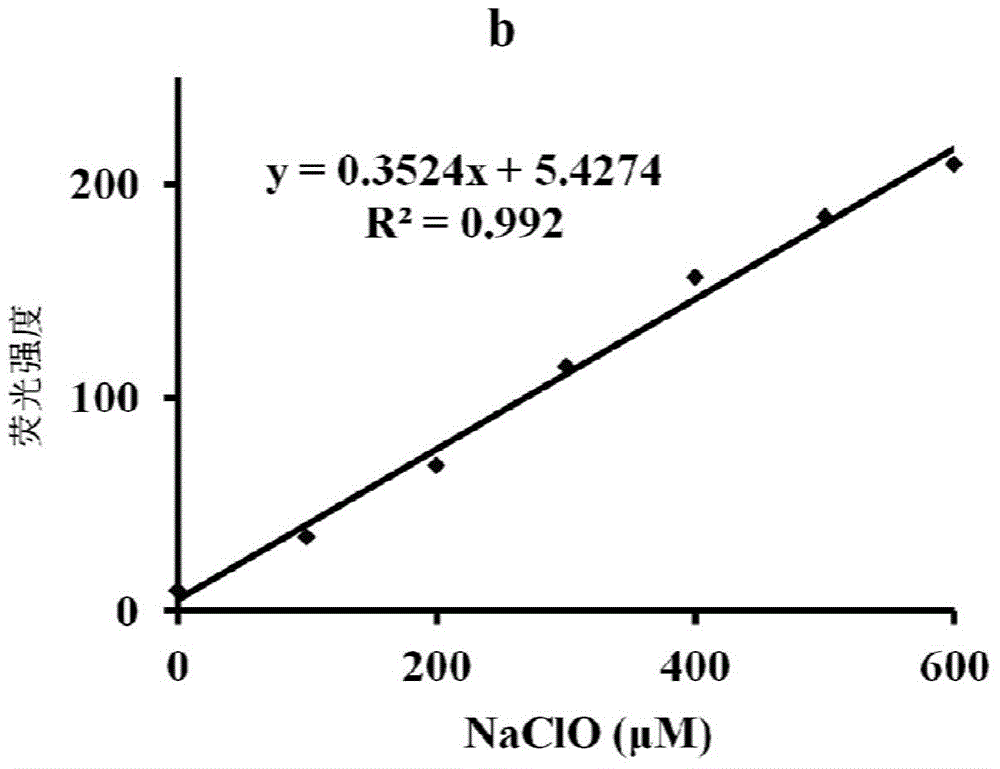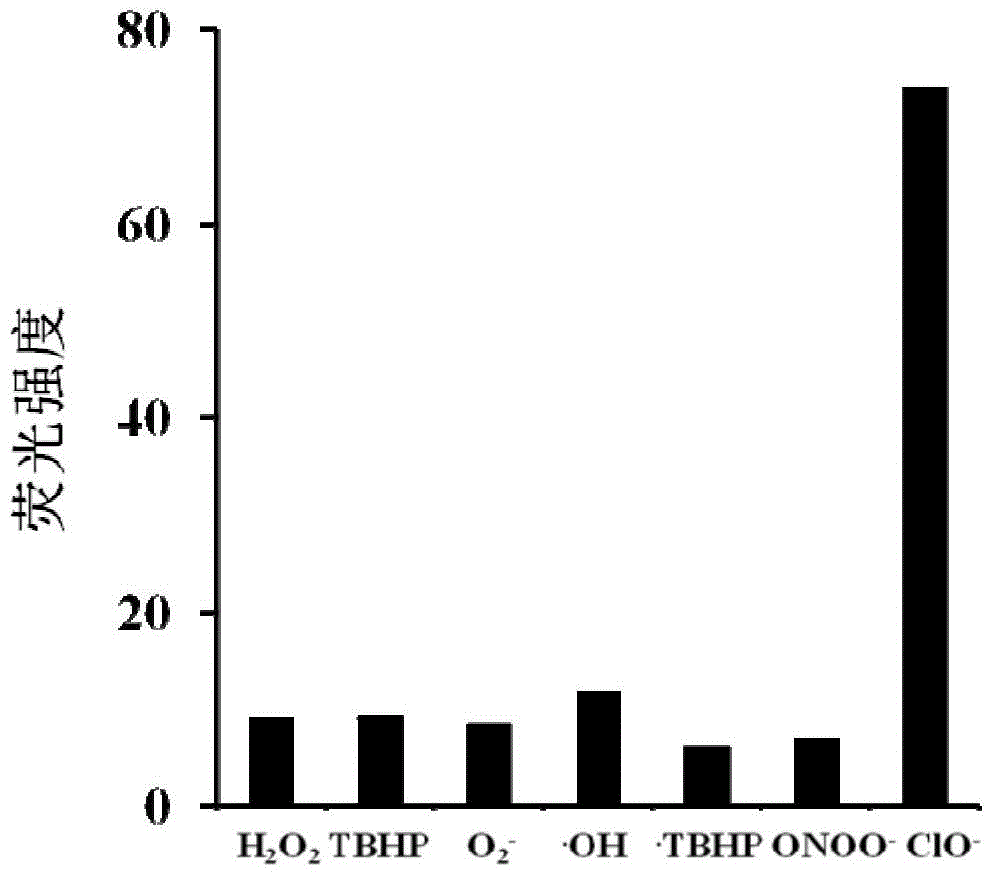High-sensitivity high-selectivity fluorescence probe capable of real-time responding hypochlorous acid and application of high-sensitivity high-selectivity fluorescence probe
A technology of hypochlorous acid and hypochlorite, which is used in fluorescence/phosphorescence, luminescent materials, organic chemistry, etc., can solve the problems of slow response speed, complex synthesis, poor selectivity, etc., and achieves good stability, simple synthesis, and water solubility. Good results
- Summary
- Abstract
- Description
- Claims
- Application Information
AI Technical Summary
Problems solved by technology
Method used
Image
Examples
Embodiment 1
[0036]
[0037] (Scheme 1) 122mg (1.0mmol) salicylaldehyde, 125mg (1.0mmol) o-aminothiophenol are dissolved in the mixed solvent of 15mL n-butanol and toluene (volume ratio is 7:3), then in 120 ℃ Reaction at constant temperature for 10h. Then the reaction solution was rotary evaporated to remove n-butanol and toluene to obtain a crude product, which was separated by column chromatography using a dichloromethane system to obtain 144 mg of a white pure product with a yield of 63%.
[0038] (Scheme 2) 183mg (1.5mmol) salicylaldehyde, 125mg (1.0mmol) o-aminothiophenol are dissolved in the mixed solvent of 15mL n-butanol and toluene (volume ratio is 7:3), then in 120 ℃ Reaction at constant temperature for 10h. Then the reaction solution was rotary evaporated to remove n-butanol and toluene to obtain a crude product, which was separated by column chromatography using a dichloromethane system to obtain 172 mg of a white pure product with a yield of 75%.
[0039] (Scheme 3) 244mg...
Embodiment 2
[0044] The inventor of the present invention has carried out following test: (a) the influence of different concentration NaClO (0~1000 μ M) on probe (5 μ M) fluorescence spectrum; linear relationship between. The above determination was carried out in a mixed system of acetonitrile and water (5:5, v / v, 5mM PBS, pH=7.4), the probe used was the compound prepared in Example 1, and all spectral tests were carried out Measured at 25°C after 2 minutes of NaClO addition. See Figure 1 for the results.
[0045] It can be seen from Figure 1 that with the increase of the concentration of NaClO in the probe solution, the fluorescence spectrum gradually increases, and in the range of NaClO concentration of 0-600 μM, the concentration of NaClO and the fluorescence intensity have a linear relationship. Therefore, NaClO in biological samples and water can be quantitatively analyzed by means of the probe of the present invention.
Embodiment 3
[0047] Effect of different analytes (200 μM) on the fluorescence spectra of probes (5 μM). Analytes include: Hydrogen peroxide H 2 o 2 , tert-butanol peroxide TBHP, potassium superoxide KO 2 , Hydroxyl radical·OH, tert-butanol peroxide radical·TBHP, sodium peroxynitrite NaONOO, sodium hypochlorite NaClO. All tests were carried out in a mixed system of acetonitrile and water (5:5, v / v, 5mM PBS, pH=7.4), the probe used was the compound prepared in Example 1, and all spectroscopic tests were carried out Measured 2 minutes after analyte addition at 25°C. Specifically, pipette 50 μL of the probe stock solution (1 mM) into a 10 mL colorimetric tube, then add 5 mL of acetonitrile, then pipette 200 μL of the above analyte stock solution (10 mM) into the colorimetric tube, and then pipette 0.5 mL of PBS solution (pH=7.4, 100 mM), and finally dilute to 10 mL with ultrapure water. Shake well, let stand for 2 minutes, then measure. The result is as figure 2 shown.
[0048] from ...
PUM
 Login to View More
Login to View More Abstract
Description
Claims
Application Information
 Login to View More
Login to View More - R&D
- Intellectual Property
- Life Sciences
- Materials
- Tech Scout
- Unparalleled Data Quality
- Higher Quality Content
- 60% Fewer Hallucinations
Browse by: Latest US Patents, China's latest patents, Technical Efficacy Thesaurus, Application Domain, Technology Topic, Popular Technical Reports.
© 2025 PatSnap. All rights reserved.Legal|Privacy policy|Modern Slavery Act Transparency Statement|Sitemap|About US| Contact US: help@patsnap.com



